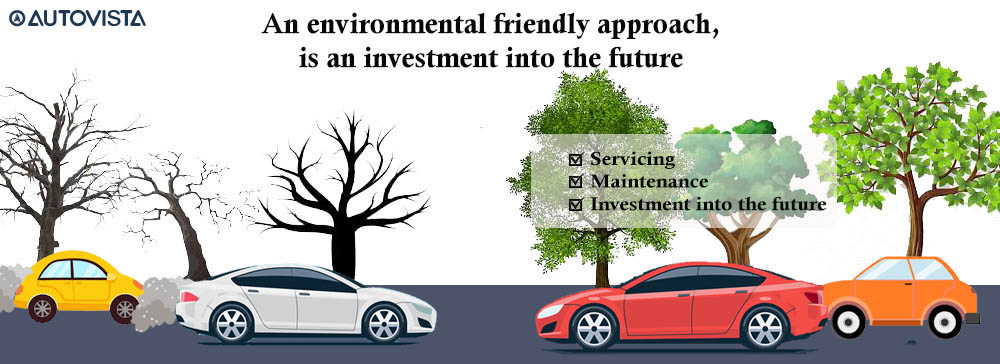Sustainable and Eco-Friendly Automotive Practices on 2024: Driving Towards a Greener Future – The automotive industry is undergoing a significant paradigm shift, with a growing emphasis on sustainable and eco-friendly practices. Manufacturers, consumers, and policymakers are collectively steering the industry towards a greener future, seeking innovative solutions to minimize environmental impact. In this article, we explore the various sustainable and eco-friendly practices shaping the automotive landscape.

1. Electrification of Vehicles: Powering the Green Revolution
The electrification of vehicles stands out as a pivotal strategy in creating more sustainable and eco-friendly transportation. Electric Vehicles (EVs), powered by electricity stored in batteries, produce zero tailpipe emissions, reducing reliance on fossil fuels and decreasing overall carbon footprints. As technology advances, the range of electric vehicles is expanding, making them a viable option for a broader range of consumers.
2. Hybrid Technology: Bridging the Transition Period
Hybrid vehicles serve as a bridge between traditional internal combustion engines and fully electric vehicles. These vehicles combine an internal combustion engine with an electric motor, offering improved fuel efficiency and reduced emissions. Hybrid technology is a transitional solution that allows consumers to experience the benefits of electric power without fully committing to EVs.
3. Sustainable Materials: From Design to Production
The automotive industry is increasingly incorporating sustainable materials in vehicle design and production. From interior components to body parts, manufacturers are exploring alternatives to traditional materials. Recycled plastics, bio-based materials, and responsibly sourced fibers are being integrated into vehicle interiors, reducing the environmental impact of manufacturing processes.
4. Lightweighting: Enhancing Fuel Efficiency
The pursuit of lightweighting is a key strategy in improving fuel efficiency and reducing emissions. Lightweight materials, such as aluminum and high-strength composites, are being used to construct vehicle bodies, leading to reduced energy consumption during operation. Lighter vehicles also contribute to improved handling and overall performance.
5. Eco-Friendly Automotive Manufacturing Processes: A Sustainable Production Cycle
Automakers are adopting eco-friendly manufacturing practices to minimize the environmental impact of production. Energy-efficient facilities, waste reduction measures, and water conservation initiatives are becoming integral parts of sustainable manufacturing. These practices aim to ensure that the entire lifecycle of a vehicle, from production to disposal, aligns with environmental sustainability goals.
6. Circular Economy Initiatives: Recycling and Reusing Components
The concept of a circular economy is gaining traction in the automotive industry. Manufacturers are exploring ways to design vehicles with recycling in mind, making it easier to disassemble and recycle components at the end of a vehicle’s life. This approach minimizes waste and encourages the reuse of materials in the production of new vehicles.
7. Green Supply Chains: Tracing Environmental Footprints

Sustainable and eco-friendly practices extend beyond the manufacturing plant to the entire supply chain. Automakers are increasingly collaborating with suppliers committed to environmentally responsible practices. This includes sourcing raw materials ethically, reducing transportation-related emissions, and implementing sustainable practices at every stage of the supply chain. (Read More: Autonomous Driving Technology: Navigating the Road to Self-Driving Cars)
8. Renewable Energy in Manufacturing: Reducing Carbon Emissions
The adoption of renewable energy sources in manufacturing facilities contributes to reducing the carbon footprint of the automotive industry. Solar and wind power are increasingly being integrated into production processes, helping automakers transition towards cleaner and more sustainable energy alternatives.
9. Eco-Friendly Vehicle Technologies: Beyond the Powertrain
Sustainability extends to various aspects of vehicle technology, beyond the powertrain. Energy-efficient lighting, regenerative braking systems, and eco-friendly air conditioning technologies are examples of features designed to minimize energy consumption and enhance overall vehicle efficiency.
10. Consumer Education and Eco-Driving Practices: Shaping Behavior
Promoting eco-friendly driving practices is an essential aspect of the sustainable automotive movement. Educating consumers about the benefits of efficient driving, proper maintenance, and responsible vehicle use can significantly contribute to reducing the environmental impact of personal transportation.
Conclusion: Paving the Way for a Sustainable Driving Future
In conclusion, sustainable and eco-friendly practices are steering the automotive industry towards a greener and more responsible future.* From the electrification of vehicles to sustainable manufacturing processes and circular economy initiatives, every aspect of the automotive ecosystem is undergoing transformation. As consumers become increasingly environmentally conscious and regulations prioritize sustainability, the automotive industry’s commitment to eco-friendly practices becomes not only a responsibility but a driving force towards a cleaner, more sustainable driving future. The journey towards sustainability in the automotive sector is a collaborative effort that involves manufacturers, consumers, and policymakers working together to pave the way for a greener and more sustainable driving experience.
Read More : Rise of Electric SUVs and Crossovers: Meeting Market Demand









4 thoughts on “Sustainable and Eco-Friendly Automotive Practices on 2024: Driving Towards a Greener Future”
Comments are closed.